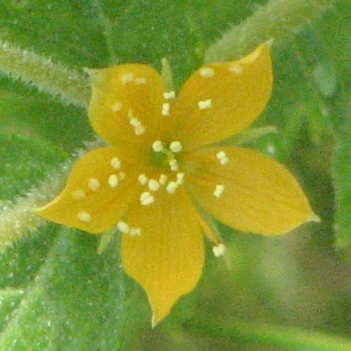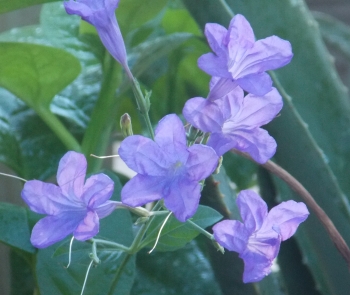Crape-Myrtle; Crape-Myrtle/Ladies Streamers Lagerstoemia indica L;. This relatively small, deciduous, multi-trunked tree, originally from drier parts of India, grows from a bulbous base, allowing it to survive fire, drought and flooding. The smooth, reddish-brown bark sheds in layers, revealing greyish new bark underneath. Though hardy, and having viable seeds, this commonly planted cultivar, grown for its attractive flowers and foliage, has not been known to reproduce itself in forests, or on the prairies. In yards, the tree sprouts, often as not, from roots, rather than its seeds. An evergreen in tropical environments, but deciduous in temperate zones, or regions with a prolonged dry season, it tolerates Dallas summers, blooming in July. New growth and suckers sprout in May, the attractive, glossy, oval leaves arranged in an alternating pattern, followed by terminal panicles of round, purplish buds which open to 1” showy, lightly fragrant flowers with crape like petals born on filaments, and curved pistols and stamen that project well beyond the petals. Modern hybrids range from white to deep red to purple. Flowers convert to black capsules less than ½” across, filled with small, hard seeds. New shoots, covered in a light grey powdery substance, can grow as much as 5’ in one season, needing yearly pruning to shape the tree and encourage blooming. (787) 5/15/16; 5/8/17; 5/25/18; 5/25/19; 5/27/20;

Note; terminal, dense panicles of round buds open nearly all at once, weighing the stems down

Crape Myrtle habit; multiple, leggy trunks with bark that peels off in layers, glossy oval leaves

Note; glossy, crisp, oval leaves are arranged alternately along new growth, which are leggy and brittle

Note; round buds open to frilly, crape like petals and curved pistols and stamen that protrude beyond the flower profile
Note; flowers have a lite, pleasant fragrance most obvious during the heat of the day































